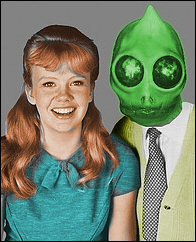 The presumably young Ada Winemiller that claimed this copy of Brides in Love #9 back in 1958 would have been reading tales of romance that perhaps misled her as to what gender roles were really like in the late 1950s. Other than the social programming within the book Ada would also have been exposed to the somewhat non-gender specific advertising within the pages as well.
The presumably young Ada Winemiller that claimed this copy of Brides in Love #9 back in 1958 would have been reading tales of romance that perhaps misled her as to what gender roles were really like in the late 1950s. Other than the social programming within the book Ada would also have been exposed to the somewhat non-gender specific advertising within the pages as well.
The advertisements that appeared in comics were not really targeted to both genders back in the day. Comic books were primarily and rightly so aimed at the young male demographic. Female customers were almost an after-thought and romance comic books held the same place the more adventure oriented books had as a product, as a safer alternative to the racier and more lurid pulp and gossip magazines that dominated the news stands.
Comic book advertising was almost certainly sold based upon volume, not a targeted youth or older group. Ads for submarines, rockets, space suits, cowboy gear and body building dominated pages set aside for outside revenue. What the sales department was selling was eyes on the page, not what percentage of boys versus girls were tempted by their products. Even the romance or female-oriented magazines for the most part contained advertising directly aimed at the young male reader. Ads for fashion and makeup were typically published in titles like Miss America or Calling All Girls which while they contained sequential art were considered full-fled magazines and were on a different tier than the other four-color comics. So it was that Brides in Love #9 contained the usual advertising of the era. That several of the ads depicted muscle men is likely incidental and while possibly of interest to Ada were probably not placed in the book specifically to her market.
So it was that Brides in Love #9 contained the usual advertising of the era. That several of the ads depicted muscle men is likely incidental and while possibly of interest to Ada were probably not placed in the book specifically to her market.
The opposite may be true for the male youth market as the amount of T&A in most of the mainstream comic books were obvious and gratuitous far beyond what the artist or writer knew was sensible. The romance books, while not as adventuresome thematically, supports my personal theory that even the girl-oriented books were also primarily meant for the male reader and served as a safe and acceptable form of pornography or at least a source to satisfy curiosity, somewhat like the notorious lingerie ads in a Sears catalog. Given that so many stories feature panels of women in their underclothes and showing them fitfully tossing and turning on their bed with frustration is provocative to be sure. A scene in an issue of Marvel Comics 2003 mini-series Unstable Molecules, reflecting the era, bears anecdotal witness to the idea. You can view the semi-NSFW page here.
These type of cheesecake voyeuristic images were almost exclusive to the romance comics. Unfortunately when this imagery, combined with the more violent ones that were ubiquitous to the action and adventure comics reached a sort of parental saturation the result was government and group involvement that resulted in the Comics Code Authority.
Of the eight pages of ads in Brides of Love #9 there are three are shilling body building, four are pushing a combination of toys and science-related instruments. Arguably given the perceived audience of the time these ads were correctly and most effectively aimed at a young male.
One ad features photographs of popular media stars, which is the only ad that might be considered by advertisers to be directly of interest to a girl of that era. But what sort of young woman was Ada Winemiller? If she took any interest in the ads at all who is to say she wasn't the most intrigued by the rocket kit? Maybe she liked the idea of breaching the walls of America's enemies in a tank? It could be she grew up to be a force to be reckoned with in the business world after learning entrepreneurship from selling salve or Grit. Out of all the advertisements from Brides in Love #9 presented here, which ones may have captured the attention of Ada the most?
Maybe she chose her own path and did whatever she wanted be it in business, science or as homemaker. Perhaps the old men editing the romance comic books of the 1950s, who mandated stories of women who yearned to be housewives and mothers and nothing else because there was no other goal worthier than domestic breeder, would be shocked to learn how Ada Winemiller ultimately turned out.
Thursday, July 21, 2011
From the Library of Ada Winemiller, Part 2
Posted by
Sleestak
at
7/21/2011 04:00:00 PM
![]()
![]()
Labels: ada winemiller, Comic Book Ad, Comic Book Romance
Subscribe to:
Post Comments (Atom)



























EWW a tank for only 4.99!
ReplyDeleteTake it from one who was there: no one ever got off on a Charlton romance comic.
ReplyDelete